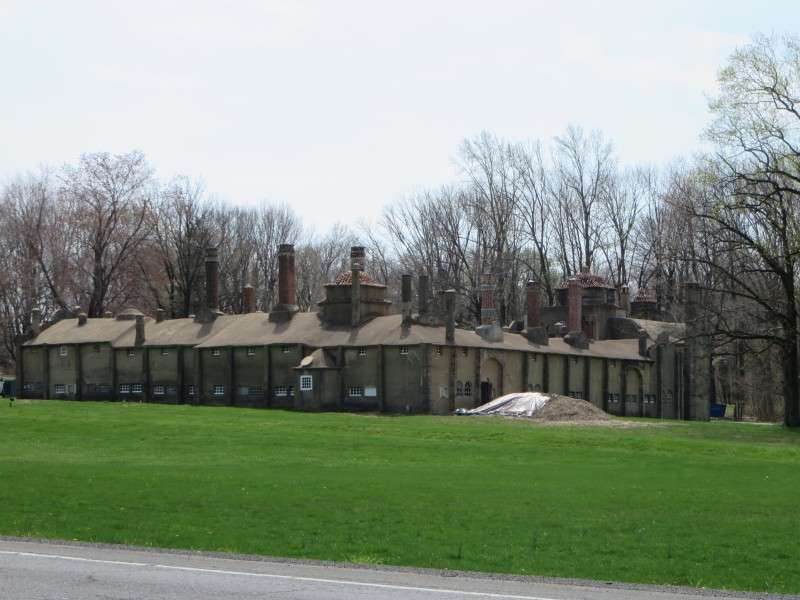Doylestown is a borough 25 miles north of Philadelphia, and is the seat of Bucks County. The population is around 8,500.
Doylestown grew up around William Doyle's Tavern, at the crossroads between the road from Philadelphia to Easton, and the road from Norristown to New Hope. The borough became the seat of Bucks County in 1813, after the county's population shifted towards the center of the county. Doylestown largely remained a courthouse town, since lack of water power kept the town from developing an industrial component, until tourism brought in money in the late 20th century.
The Mercer Museum, on Pine Street. The museum houses the pioneering collection "Tools of the Nation-Maker" and chronicles the advancement of tools in different crafts and trades.
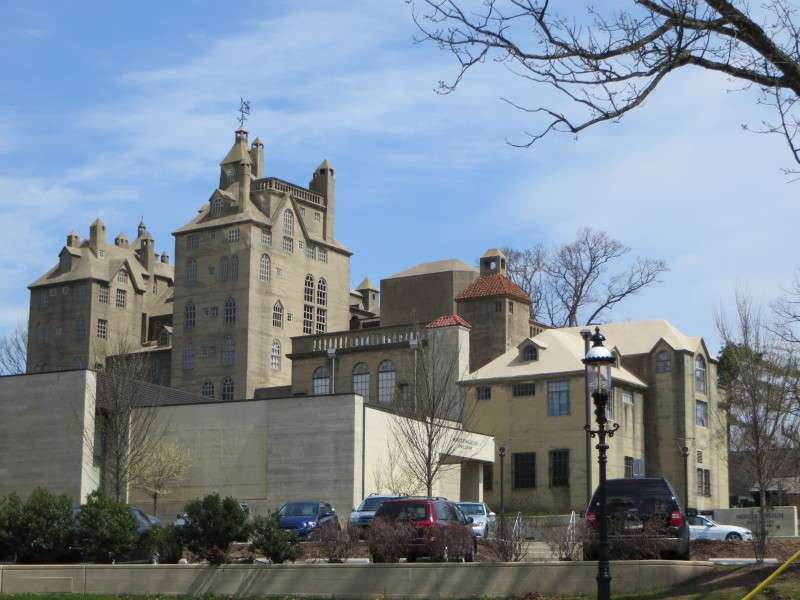
The Mercer Museum was built in 1915 using poured-in-place concrete. Concrete was used for being fireproof, and is also an early example of rebar-reinforced concrete as a structural material.
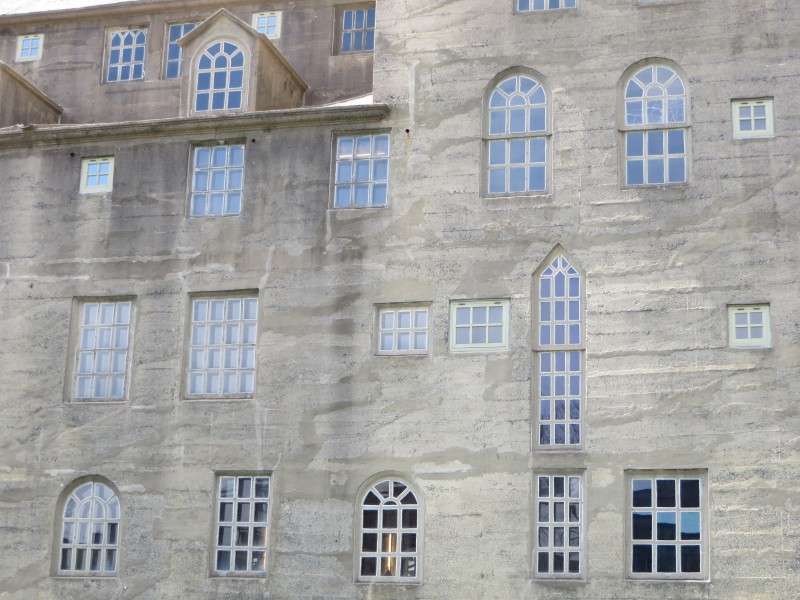
The original facade is located on what is now the back of the building; the entrance to the museum is on the other side of the structure.
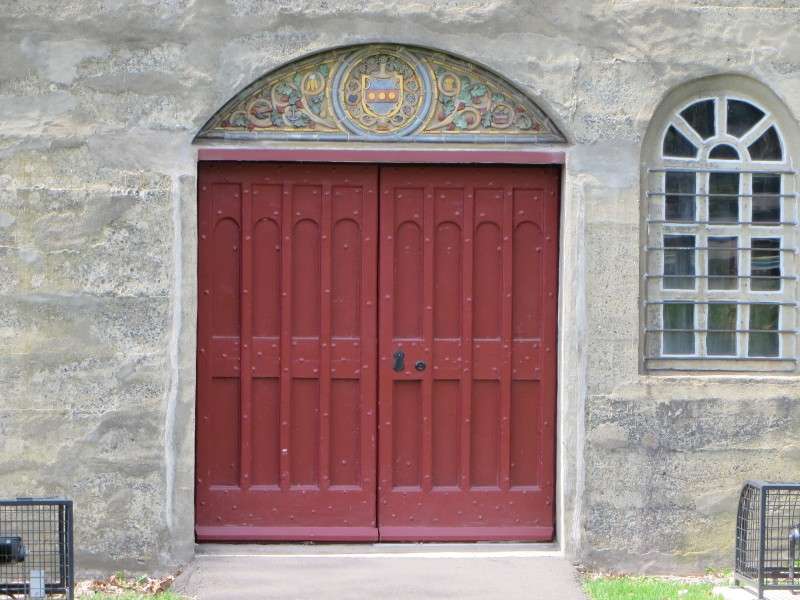
On the grounds of the Mercer Museum is a log house, built in 1800. The house was originally on Main Street, and was moved here after the museum opened.
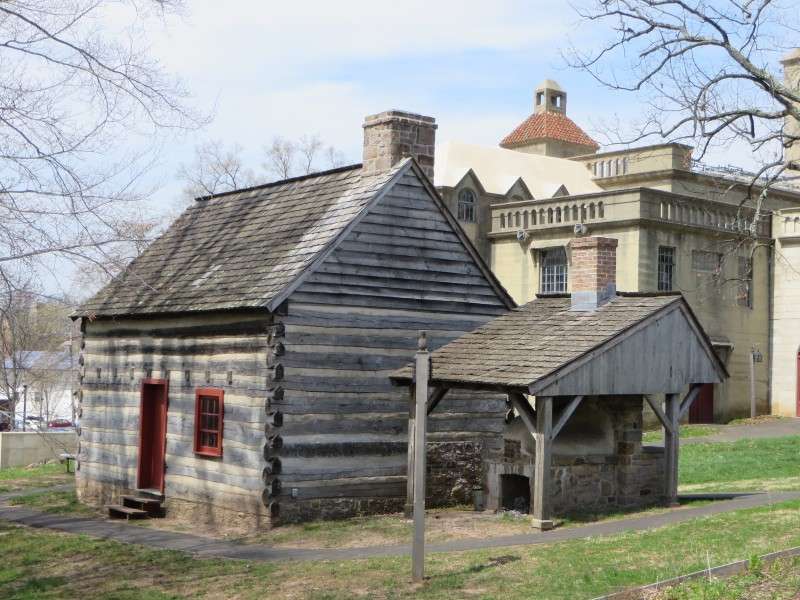
The James A. Michener Art Museum, on Pine Street. The museum, which houses works by Pennsylvania impressionists (or the New Hope school), opened in 1988.
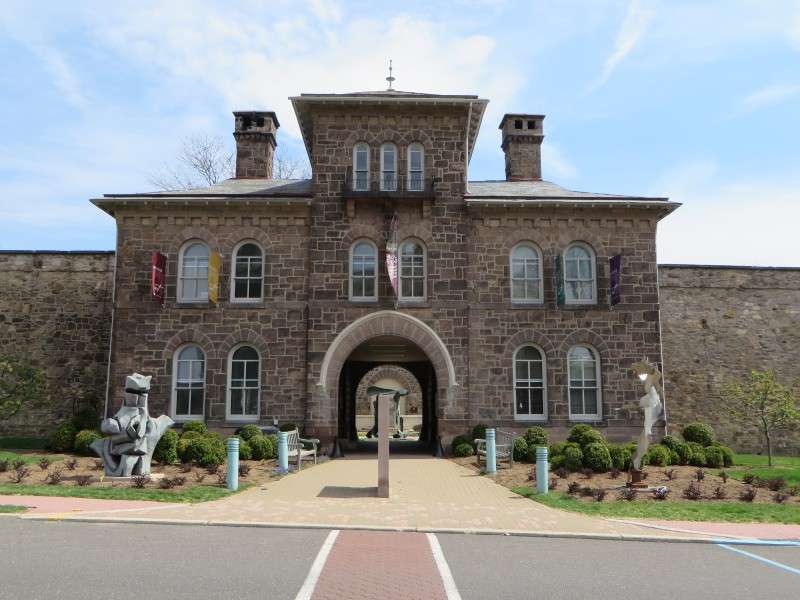
The museum was originally the Bucks County Prison, built in 1884.

The Bucks County Historical Society, on Pine Street. The structure was built in 1903, and originally housed the collection of Henry Mercer that is now in the Mercer Museum.
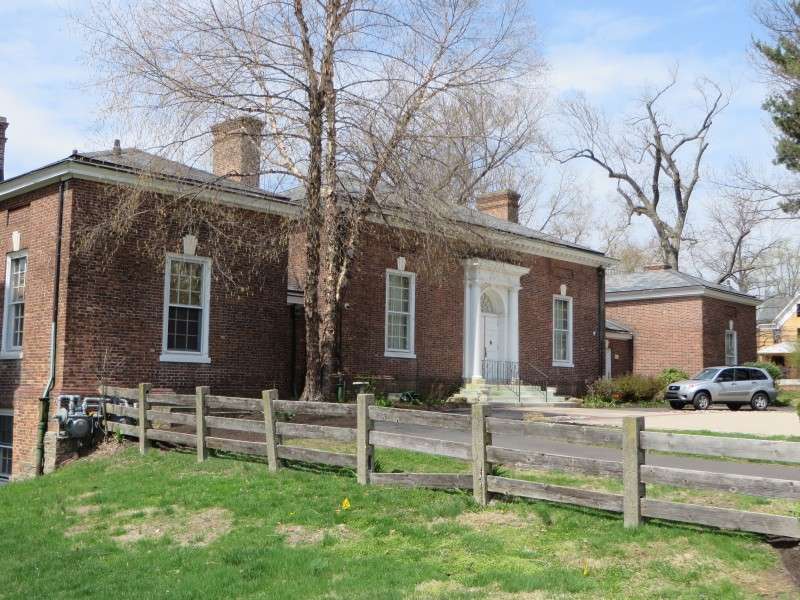
Houses on Green Street.
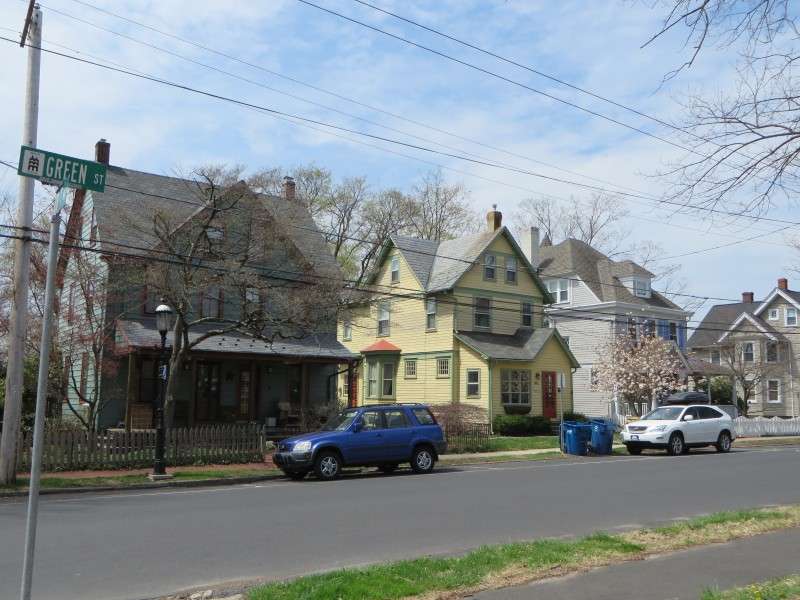
A house on Ashland Street.
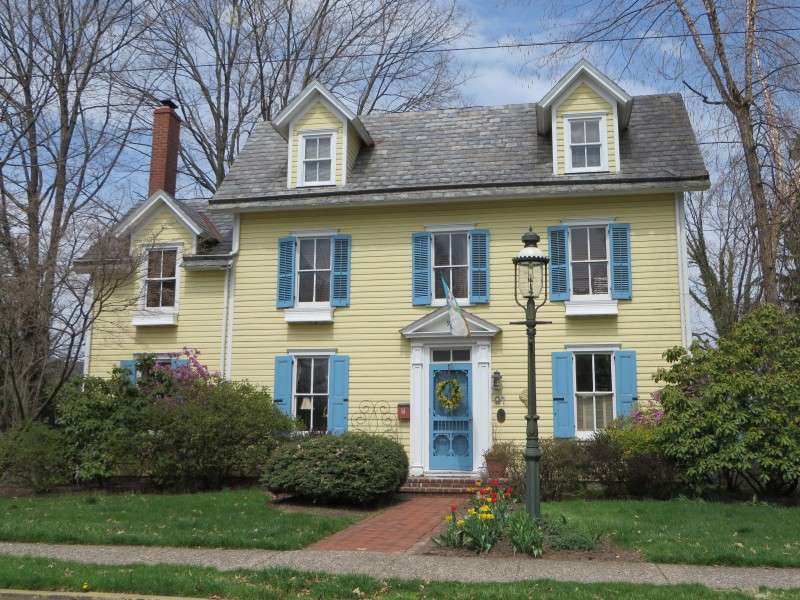
The Swain House, on Ashland Street. The house was built in 1885.
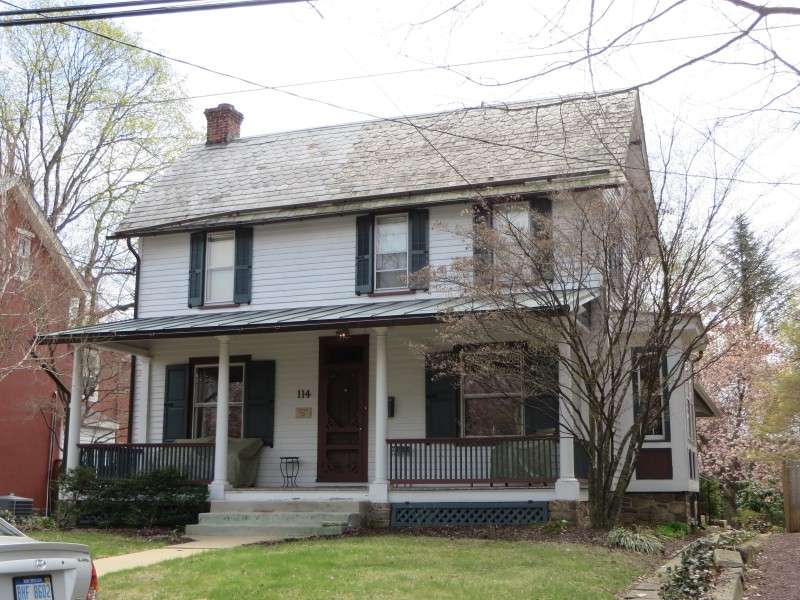
A house on Oakland Street.
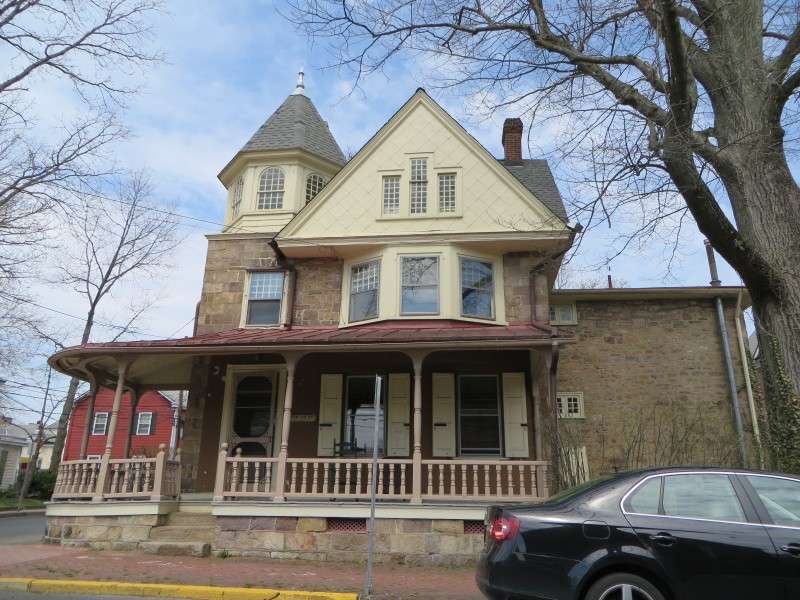
The Asher Cox House, on Oakland Street. The house was built in 1828, and is the oldest brick house in Doylestown.

The Finlay Braden House, on Oakland Street. The house was built in 1871.
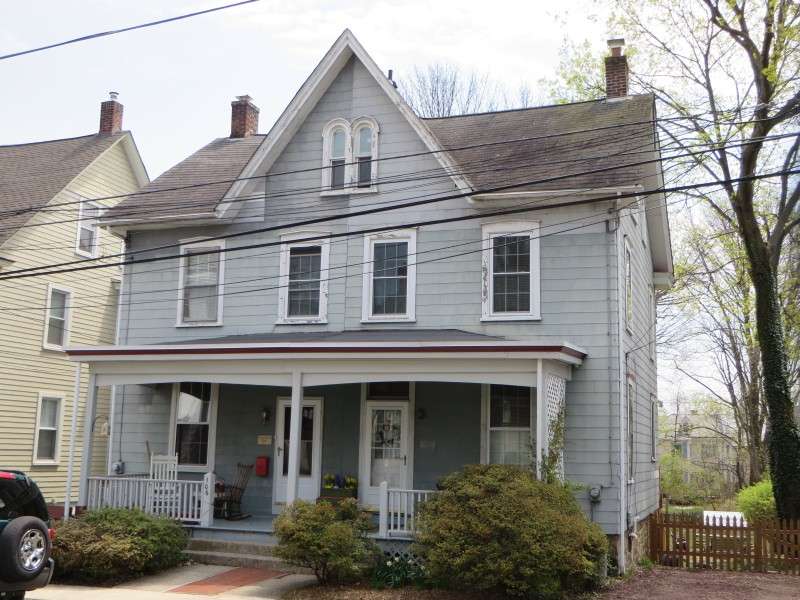
A house on Oakland Street.
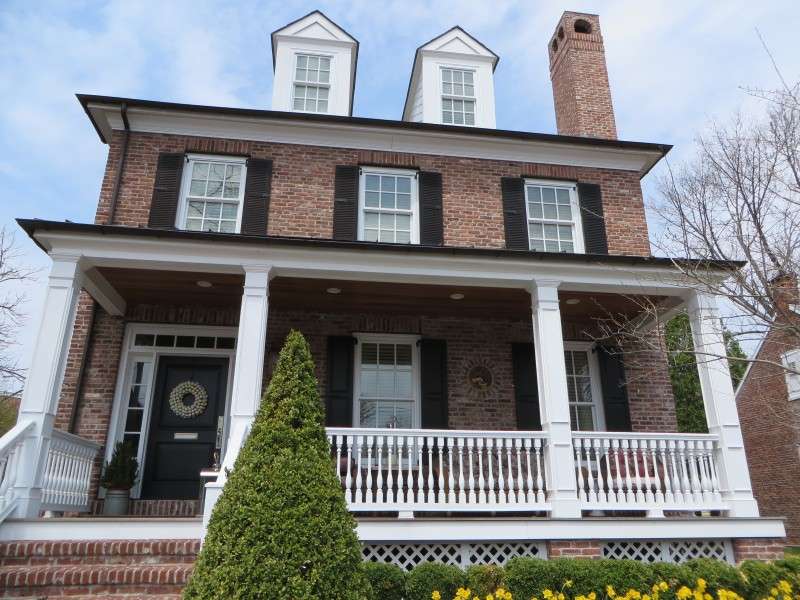
Terra cotta detailing adorns this house.
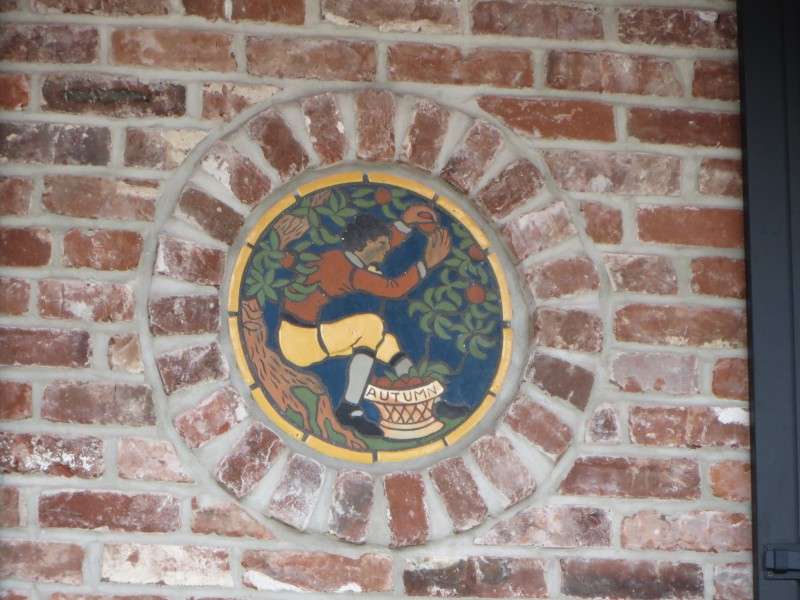
St. Paul's Episcopal Church, on Oakland Avenue. The church was built in 1845.
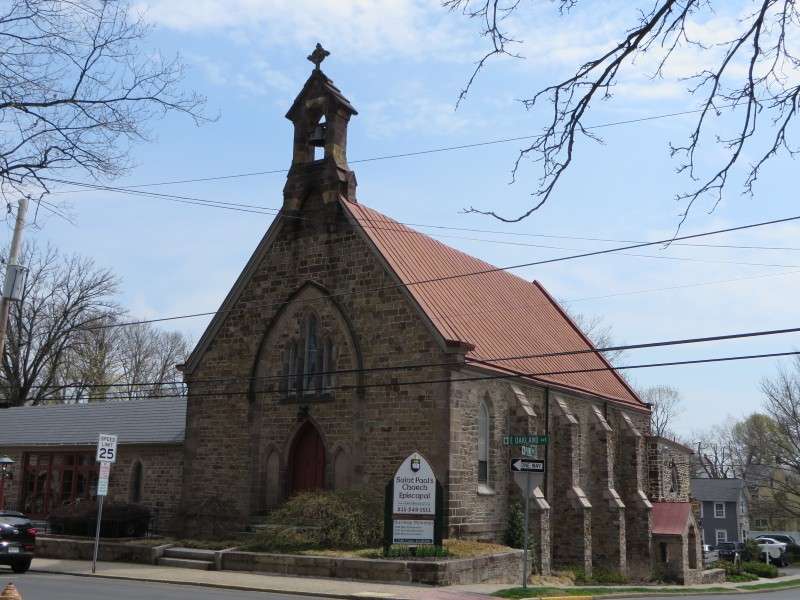
The Dr. William Brenner Barn and Horse Hospital, on Oakland Avenue. The veterinarian's office was built in 1894, and is now used as a garage.

The Preston Price House, on Oakland Avenue. The house was built in 1851.
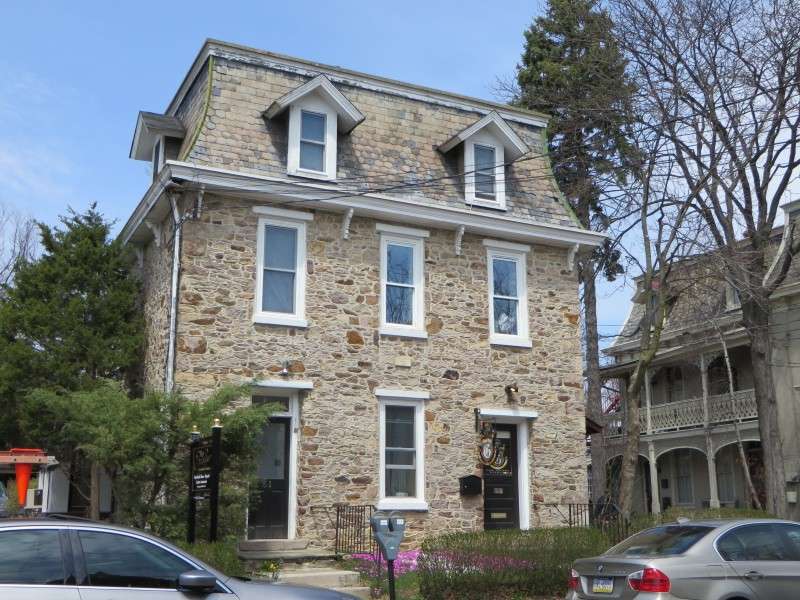
The Charles Shade House, on State Street. The house was built in 1857.

The McGinty House, on State Street. The house was built in 1829.

Buildings on State Street.
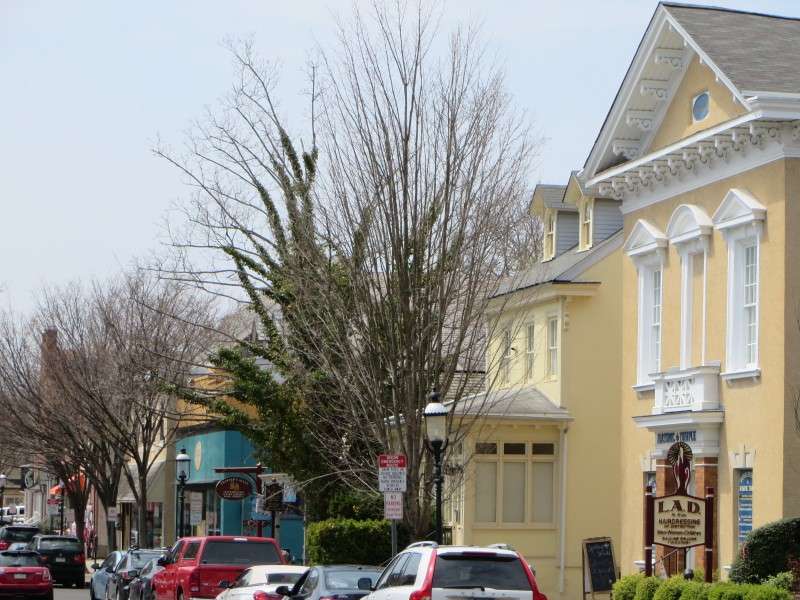
County Theater, on State Street. The theater was built in 1938.
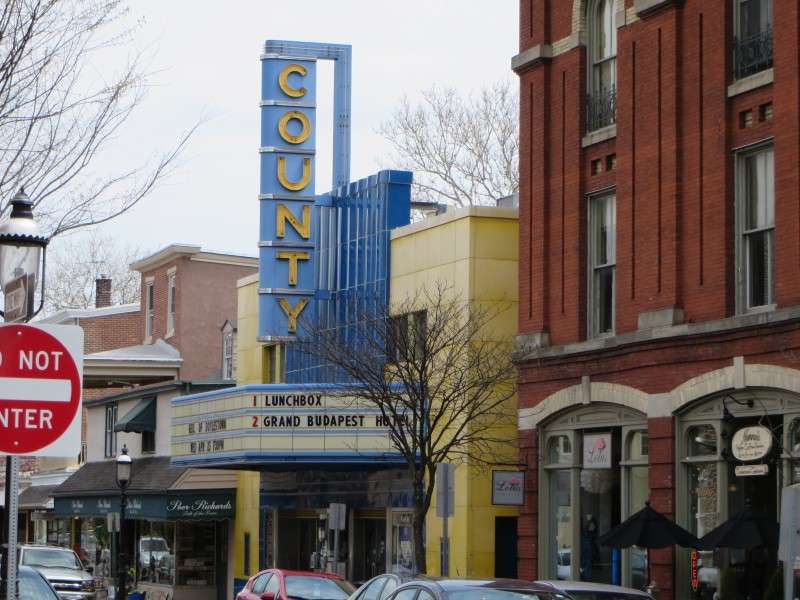
Businesses on State Street.
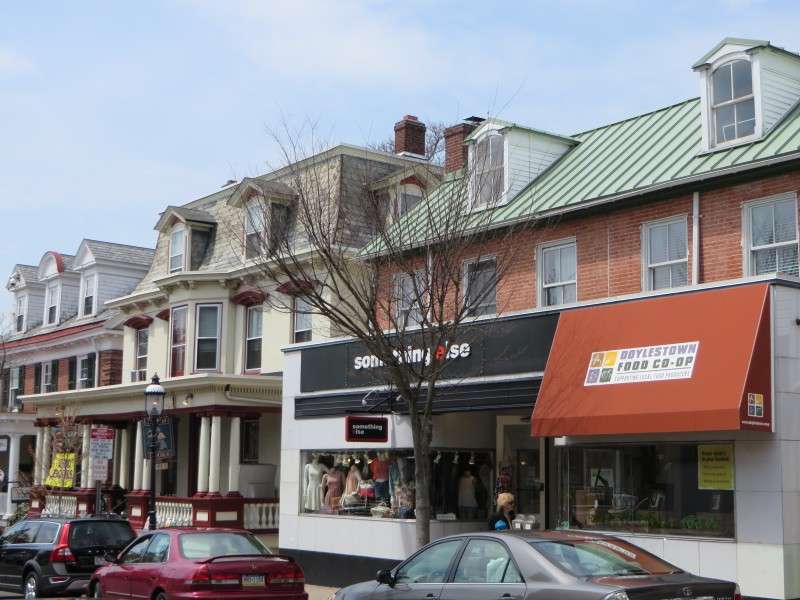
Buildings on State Street.
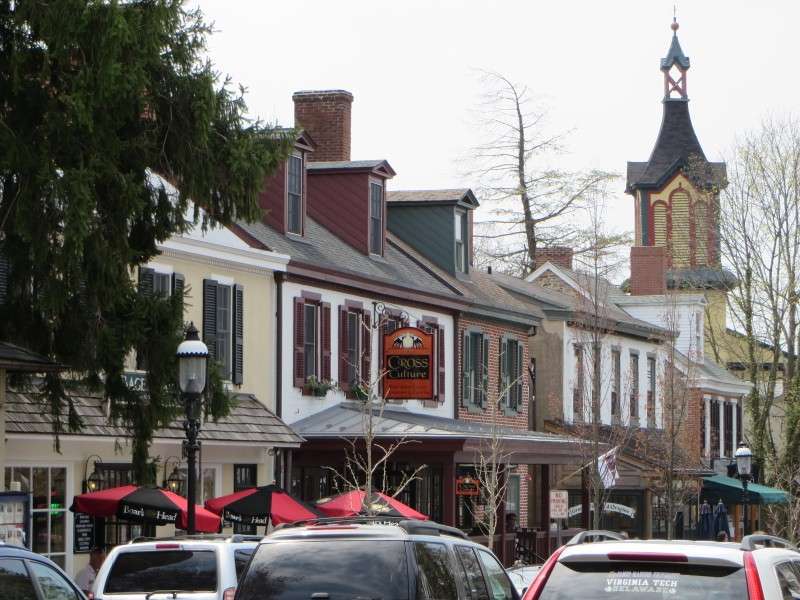
The Pugh Dungan House, on Court Street. The house was built in 1830.
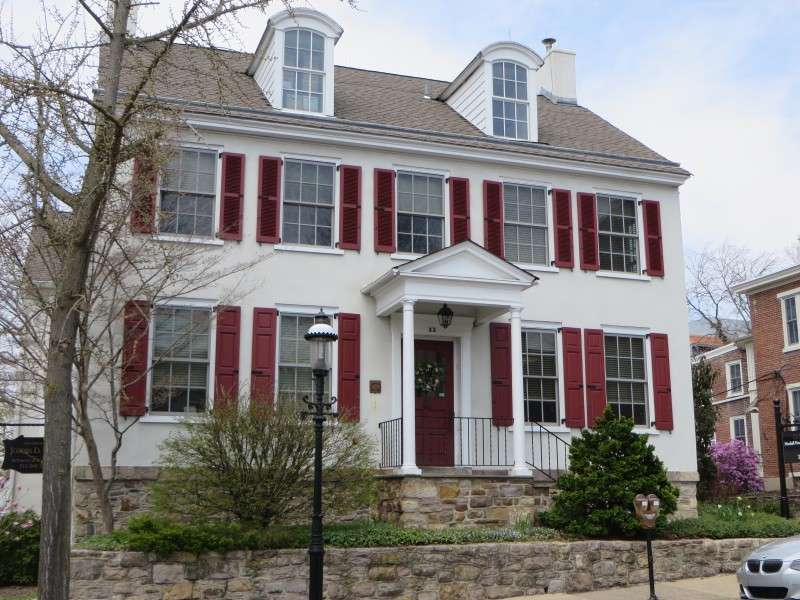
Buildings on State Street.

The Truman House, on State Street. The house was built in 1833.
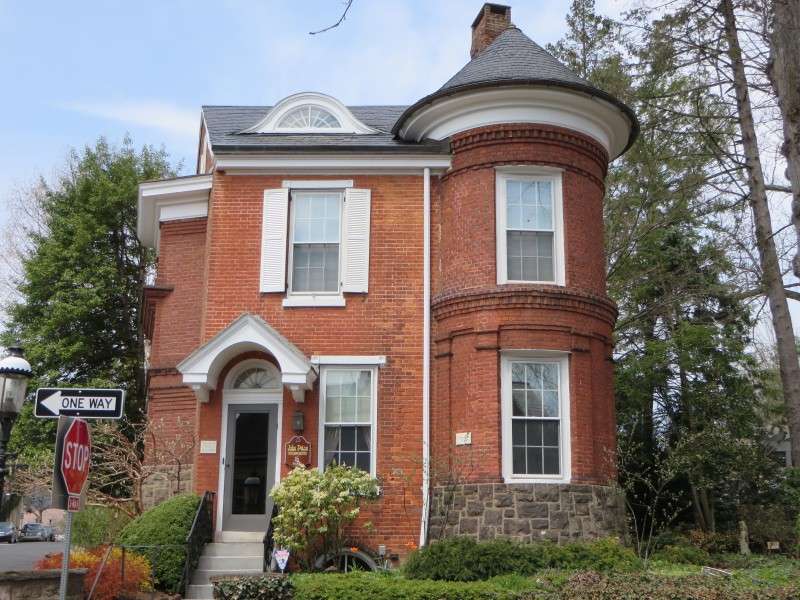
A building on Main Street.
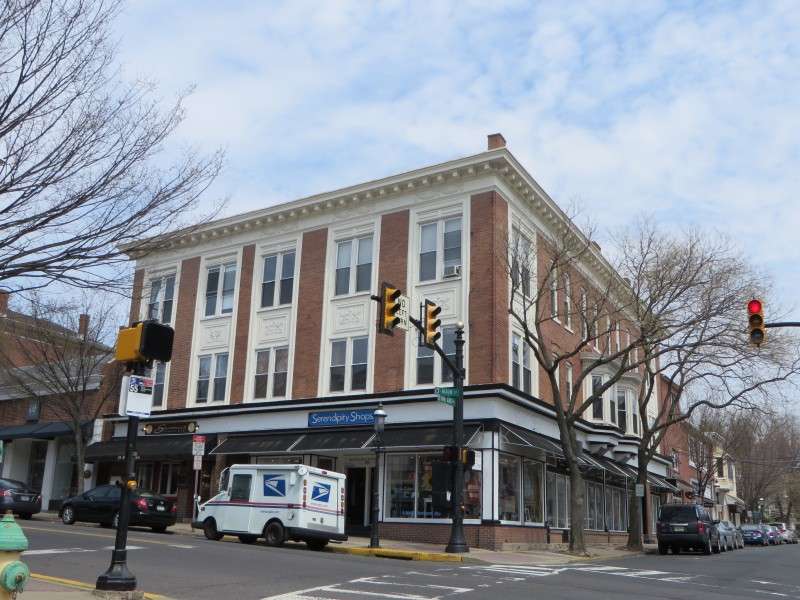
Businesses on Main Street.
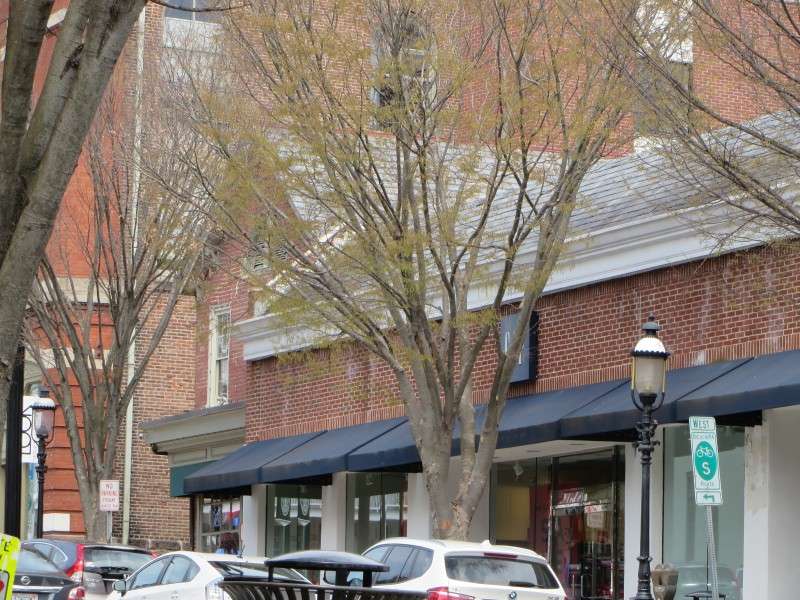
A building on Main Street.

The Lenape Building, at Main & State Streets. The structure was built in 1874 as a commercial building and opera house.
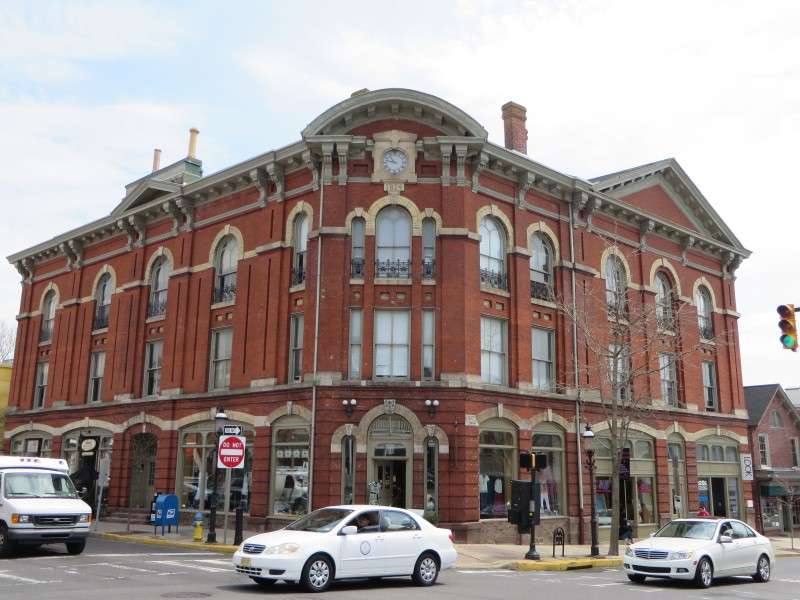
The old Fountain House, at Main & State Streets. The old tavern was built in 1758 by William Doyle, and was rebuilt in 1872 by William Corson. In the 1800s, the tavern also was utilized as a post office and stagecoach stop.
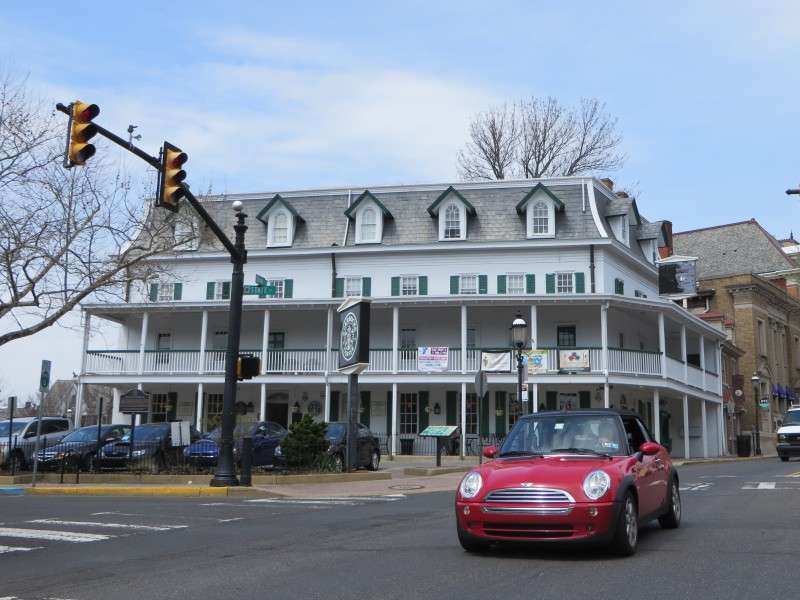
Buildings on Main Street.
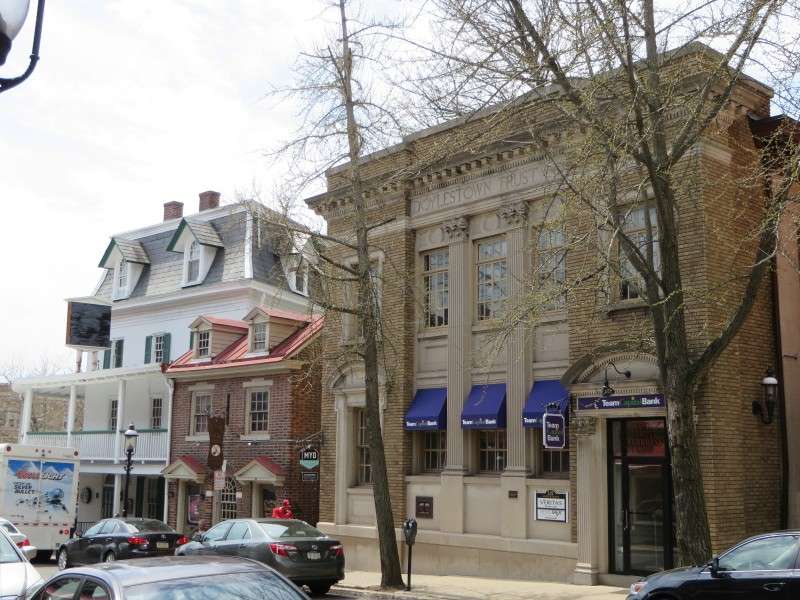
The Hart Block, on Main Street. The structure was built in 1900.
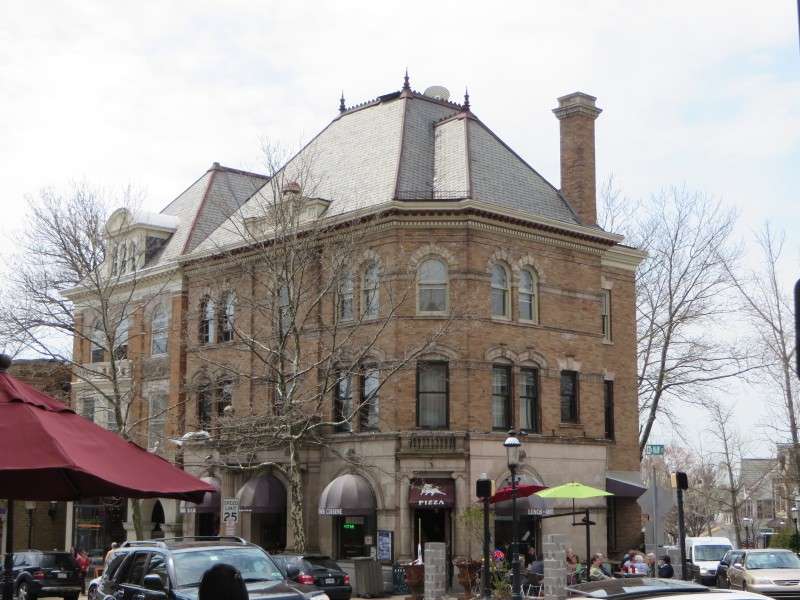
The Doylestown Fire Company No. 1, on Shewell Avenue. The fire station was built in 1902.
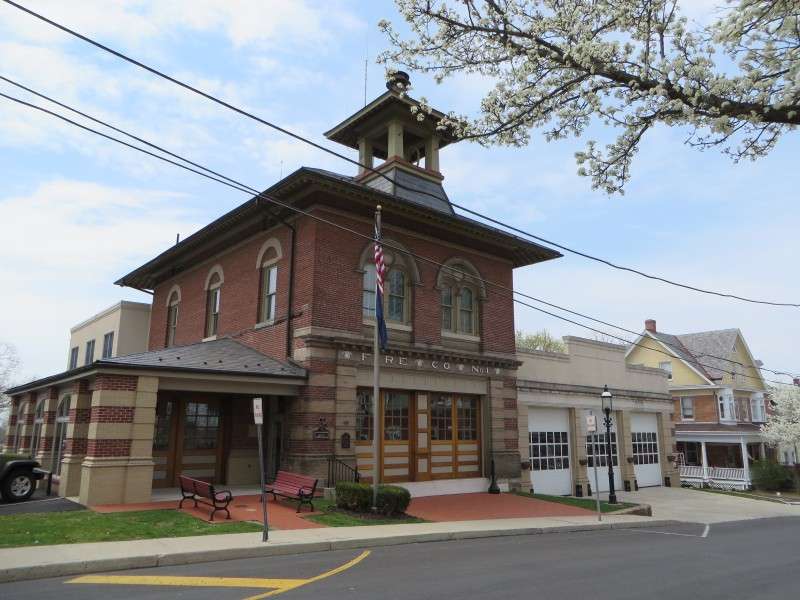
The N.C. James House, on Main Street. The house was built in 1890.
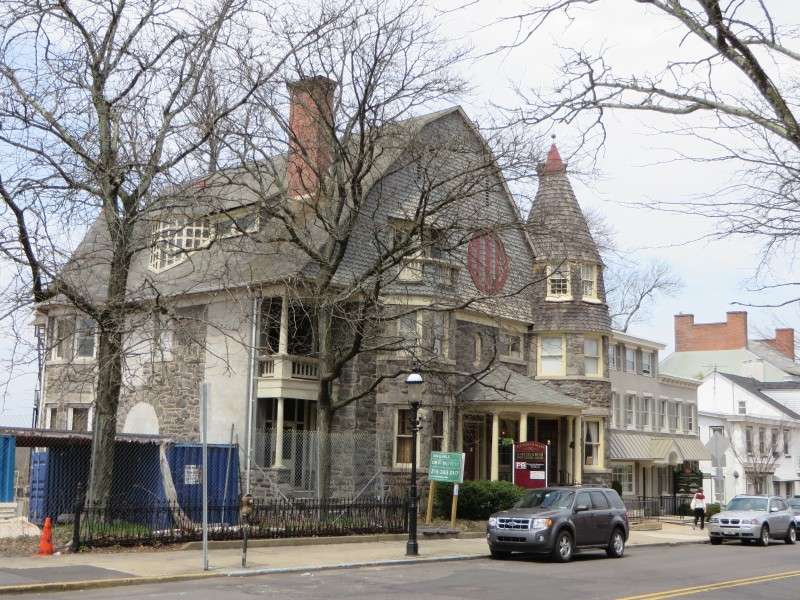
The Bucks County Justice Center, off of Main Street. The judicial center became the new Bucks County Courthouse when it opened earlier in 2015.
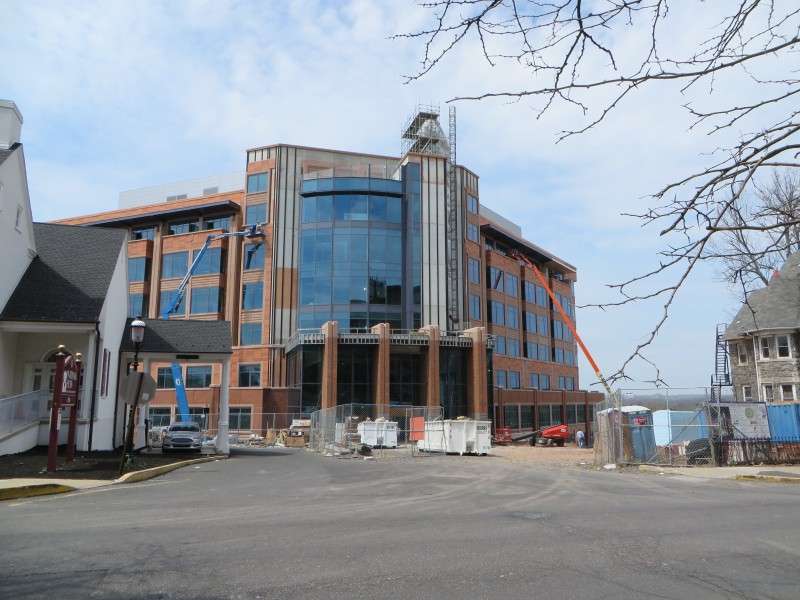
The Bucks County Courthouse, at Main, Court, & Broad Streets. The courthouse was built in 1962. The building has a circular design with a rectangular block behind it, making it distinctive from the air. Airline pilots call the courthouse "the toilet" based on its shape.

Buildings at Main & Court Streets. In the center, at the intersection, is the Civil War monument from 1868.
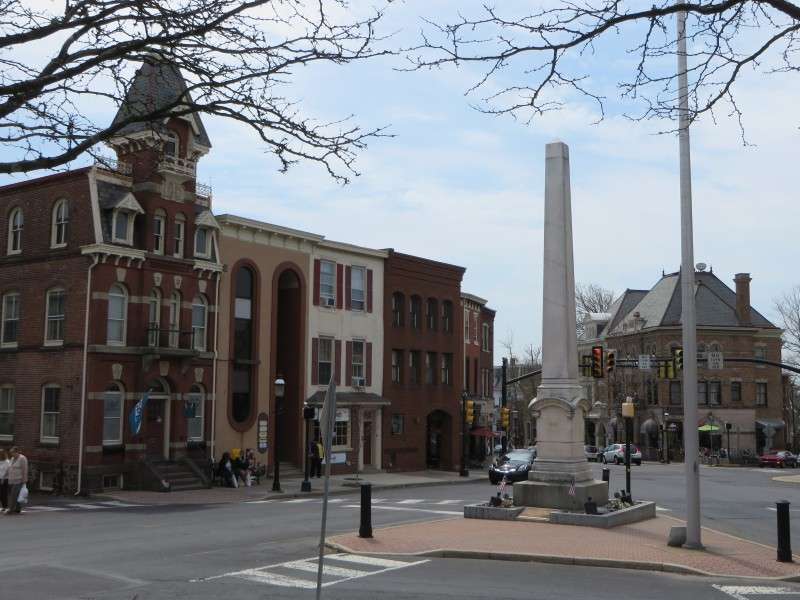
The Bucks County Intelligencer Building, on Court Street. The structure was built in 1876.

A bank building on Court Street.
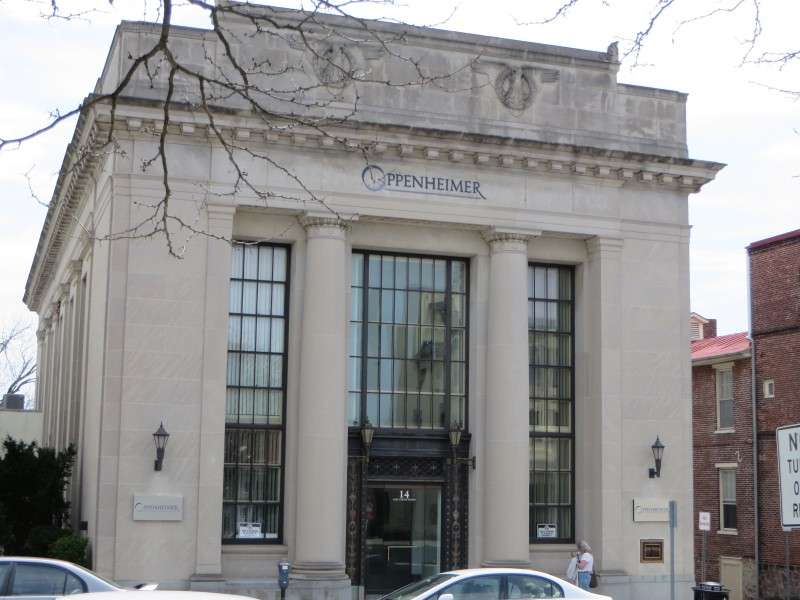
The W. W.H. Davis House, on Court Street. The house was built in 1844, and is now used as offices.
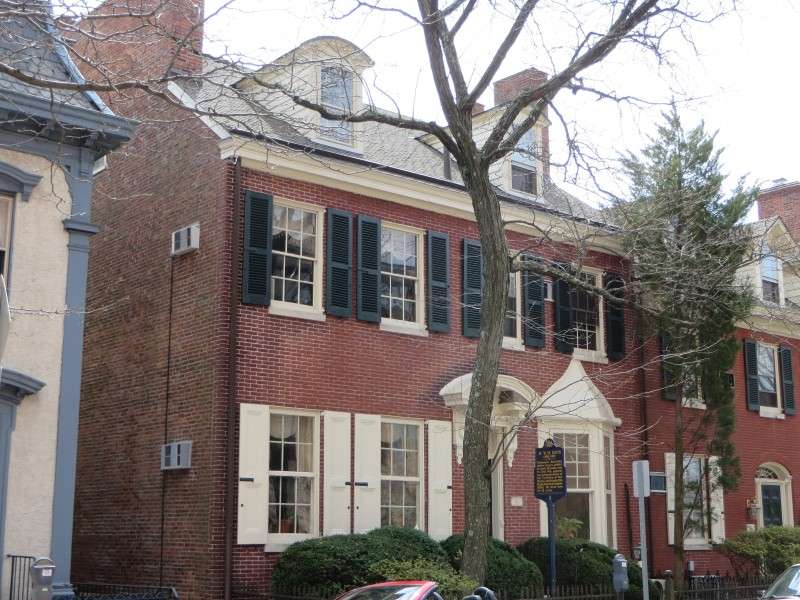
The old Bucks County Trust Company, on the right, on Broad Street at Court Street. On the left is the Hart House, built in 1892.
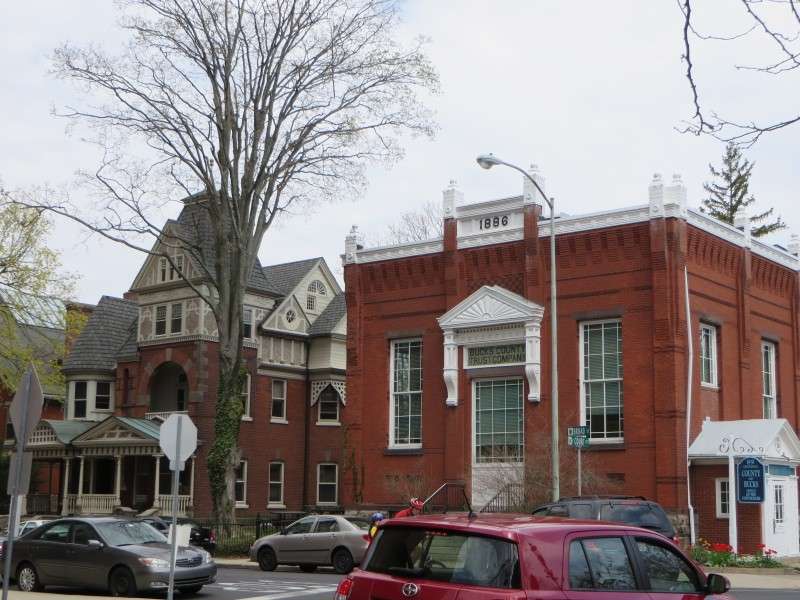
The Bucks County Trust Company was built in 1886, and now houses the Bucks County Controller Office.
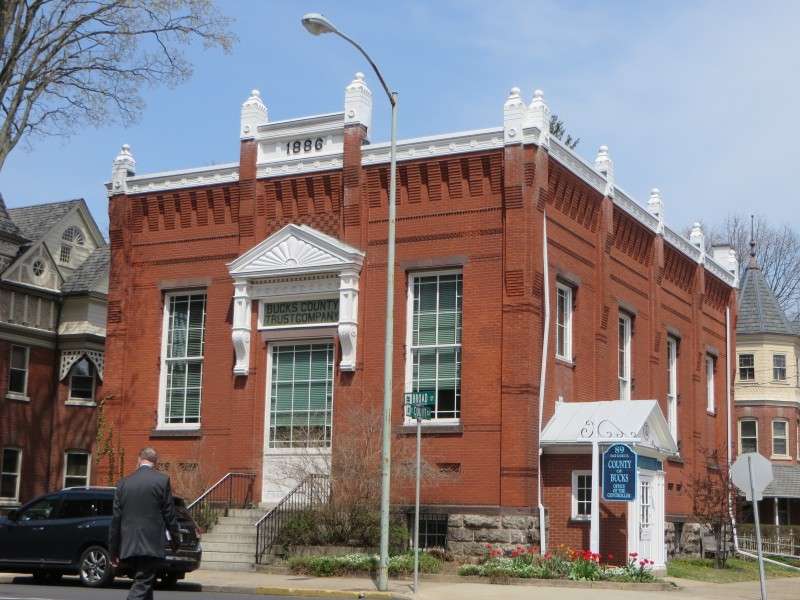
The Dr. Kirk House, on Broad Street. The house was built in 1888.
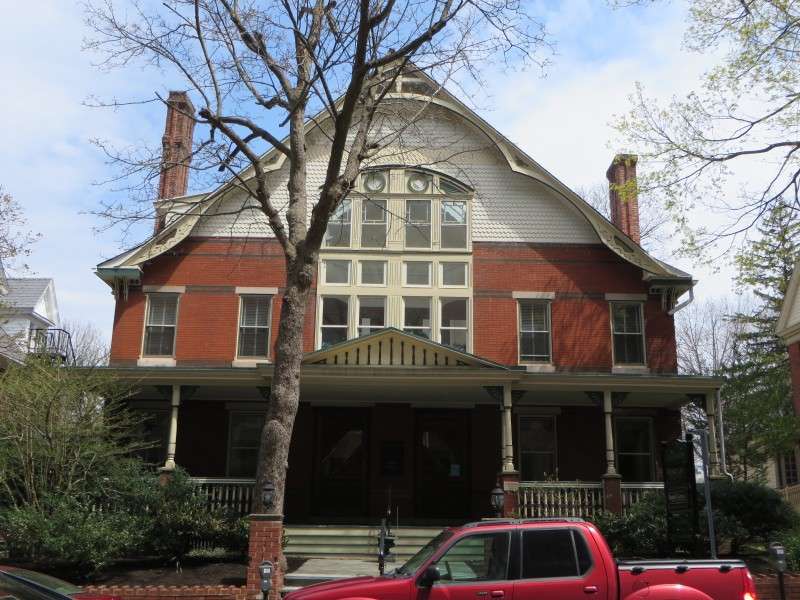
Houses on Court Street.
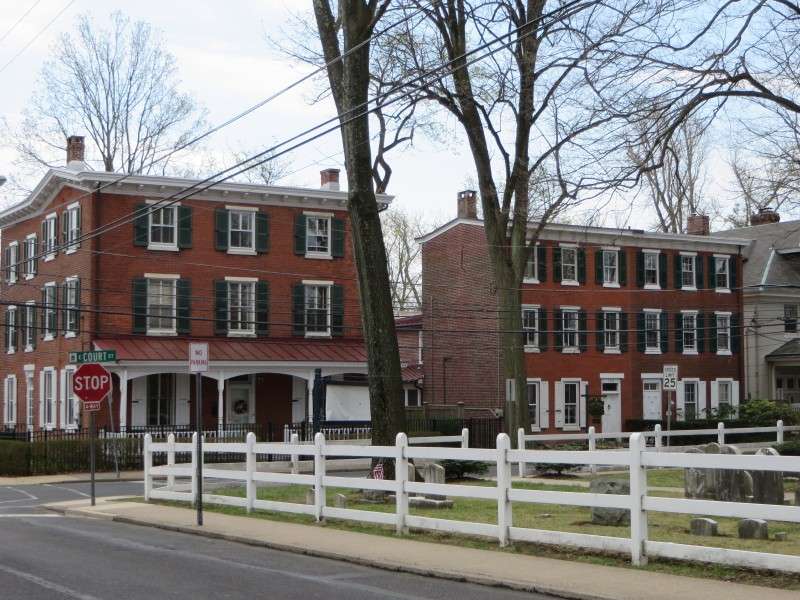
Doylestown Presbyterian Church, on Court Street. The church was built in 1872, and is the tallest building in Doylestown.

The Dunlap Homestead, on Court Street. The hose was built in 1833.
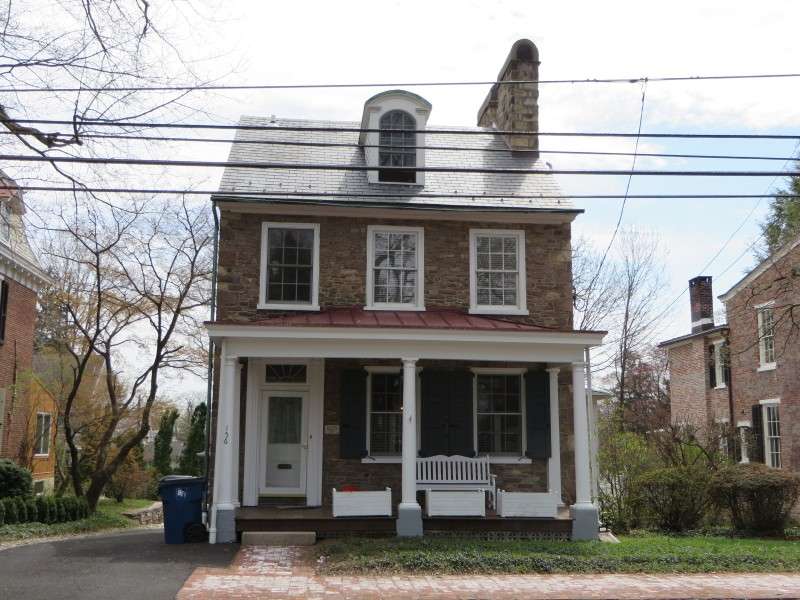
The Salem United Church of Christ Christian Education Building, on Court Street.
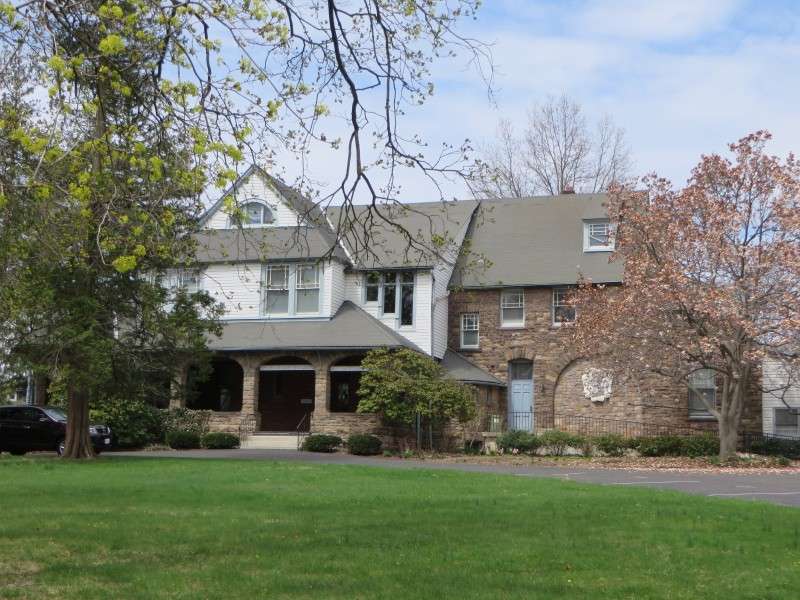
Salem United Church of Christ, on Court Street. The church was built in 1928.
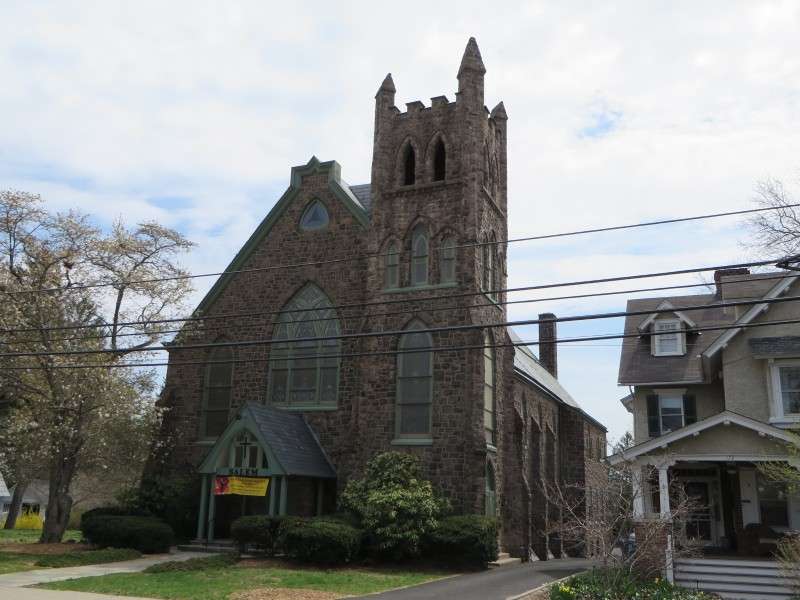
The Sienkiewicz House, on Court Street. The house was built in 1893. Casimir Sienkiewicz, economist and painter, and who was also the first chairman of SEPTA, resided here from 1938 to 1974.
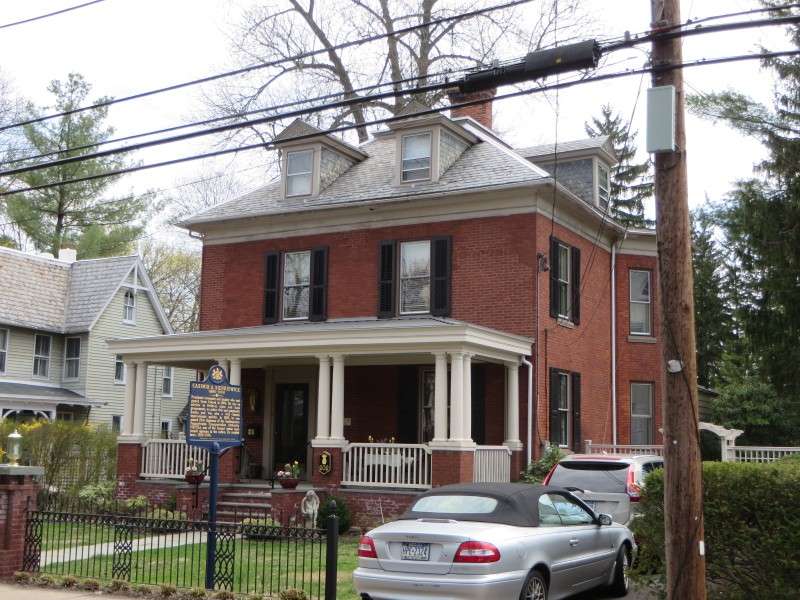
Fonthill, off of Court Street.
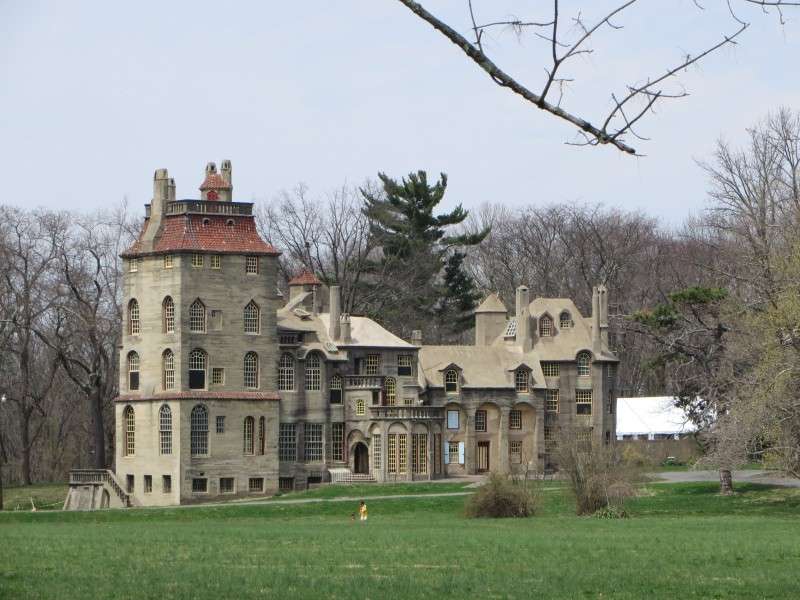
The house was built from 1908 to 1912 by Henry Chapman Mercer, who built the Mercer Museum in Doylestown for his collection of tools. The house is built with fireproof concrete.
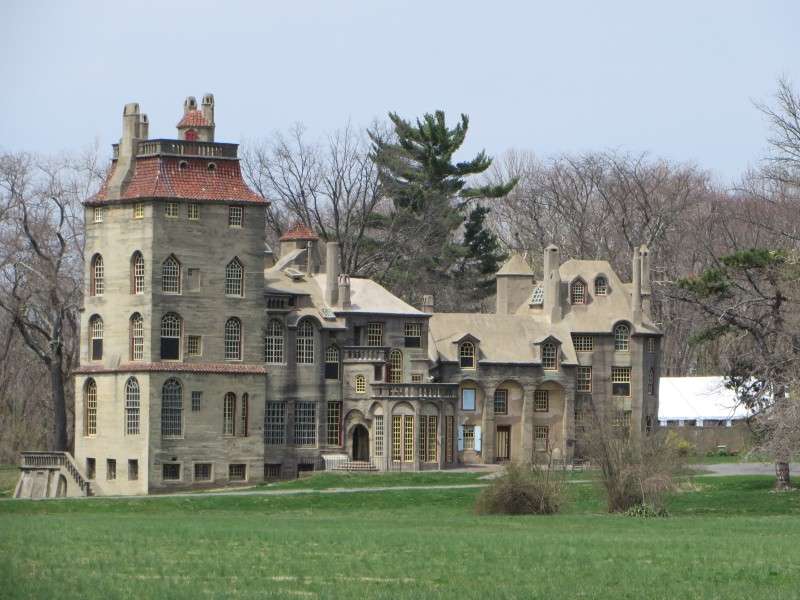
Outside of Fonthill is this memorial to members of the Doylestown Nature Club.
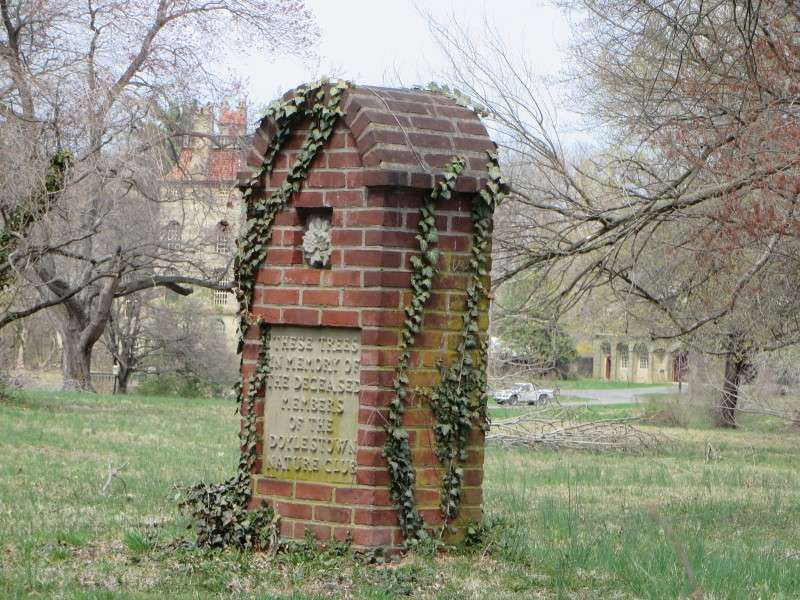
The Moravian Pottery and Tile Works, off of Swamp Road.

The tile works was built in 1912 by Henry Mercer, who believed that tiles were the proper way to decorate concrete buildings, like his house and museum.
